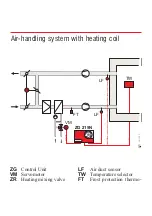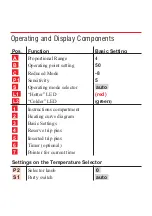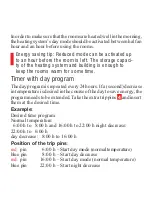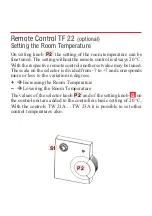
design value and which at the lowest outdoor temperature requires
a maximum heating water temperature of approx. 70 °C and a mi-
nimum temperature of approx. 20 °C. Experience shows that most
systems are quite oversized. For the usual 70/50 radiator heating
systems, the basic setting
B
è
45 (instead of 50 °C) is correct.
Night decrease: Setting knob
C
On setting knob
C
the size of the reduction to be triggered by the
timer is to be set. The setting of
C
gives a parallel shift of the ope -
rating characteristic curve to the left (see dotted curve II). This le-
ads to a decrease in the room temperature. The scale division of
C
corresponds to a room temperature decrease of approx. K (°C). “0”
means no decrease.
Example:
C
è
-8
means that the nighttime room temperature
target value is lower by 8 K compared to the daytime value, so that
the room temperature at night can decrease to approx. 8 K below
the set daytime temperature and hence
e. g. to 12 °C (20 °C -8 K = 12°C).
The recommended setting
C
at
-8
makes it possible to save quite a
lot of energy with a large nighttime decrease. In some buildings the
rooms may become too cold.
In these cases, it is recommended to set a night decrease value of
about -5 or to switch on day mode earlier.
Examples with other operating ranges:
























